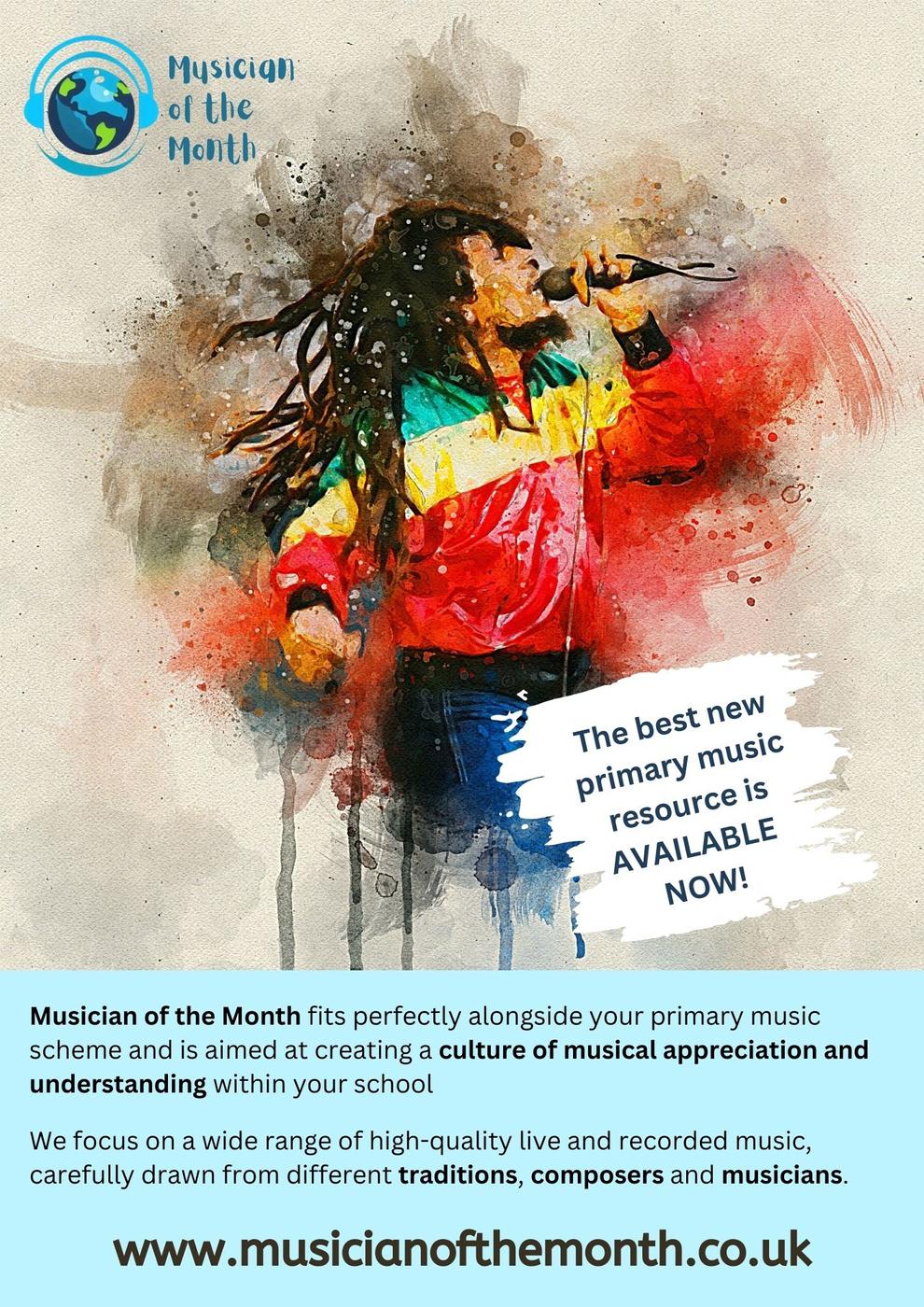
6 minute read
Spotting Musical Potential in the Primary Classroom
by Naomi Wellings
Imagine walking into a noisy classroom, children all engaged in exploring an instrument they’ve chosen from a selection on the floor in front of them The noise suggests chaos but what else is going on?
Now think how often you ’ ve allowed this to happen How often are we normally able, as educators, to let children explore and experiment without feeling the pressure to keep the noise levels down, or to get on with what comes next in the curriculum? What if, rather than planning every minute of every lesson, there was an occasional opportunity to allow children space and time to be creative and curious, or to allow them to follow an avenue you hadn’t expected. And what happens when you step back and observe?
Awards for Young Musicians (AYM) supports talented young people from low-income families, helping them to overcome financial and social barriers they face to progression. We know that due to family circumstances, culture or background, some children don’t show obvious potential due to lack of prior musical experience and opportunity To help redress this inequity, we ’ ve developed our Identifying Musical Talent and Potential programme (ITP) in partnership with Lead Facilitator Hugh Nankivell. This is closely aligned to The National Plan for Music Education’s (NPME) vision to enable “all children and young people to learn to sing, play an instrument and create music together, and have the opportunity to progress their musical interests and talents, including professionally.”
The ITP inclusive classroom approach starts with four key elements:
Getting creative
Group activities commonly used in schools require children to copy the leader or recreate sounds given to them These highlight the children who make mistakes rather than those who get it correct By choosing material that we hope children will all get ‘right’ the unfortunate side-effect is that what we are also doing is highlighting the minority who were getting it wrong. When we switch to material that is mainly improvised and creative - and therefore could not be ‘ wrong ’ - it leads to a different reading of the musical potential in the class
Allowing a diversity of sound
Offering children a diversity of sound promotes inclusivity. Particularly in whole-class instrumental lessons, diversity of instruments can be harder to achieve, and often leaves some young people feeling as if they aren’t musical or can’t join in The ITP approach focuses on giving children choice and agency in being able to select from a range of options as opposed to being presented with only one – for example hand-held percussion rather than a violin or using body percussion rather than voice.
Going with the flow – being curious
When there’s an opportunity, begin your music session with a curiosity about what will happen, and not a fixed plan of action
Some structure is clearly important when planning a session, but if you lead a music class with a rigid structure and timetable then you will likely miss some interesting outcomes Lead some creative group activities that are responsive to an initial stimulus rather than having everything pre-planned This results in young people being more creative, having more fun and engaging in music in a way that isn’t always possible.
Actively observing
Finding an opportunity to step back and really observe your class is a key part of the ITP approach. By being a witness rather than a leader, it’s possible to observe children exhibiting musical potential that you might not normally notice There are always opportunities to step back from an activity – you can ask the children to take turns leading whilst you observe, or if possible, film your session to watch back.

These four elements are combined with our Facets of Musical Potential framework, which can give teachers and music educators a different lens through which to spot the potential which might otherwise go unnoticed. These have been tested in a range of settings including primary, secondary and special schools as well as in the community They can be applied by someone without any prior musical knowledge but need some contexthaving the right information for each student is important. Whilst it’s not always key to know a lot about a child, having some relevant information will give you an individual scale to measure their progress by. What might seem like minor changes for some students could represent a significant shift for others – this is particularly important in SEND settings or with non-verbal children where they may show elements of the facets in other ways
The 8 Facets of Musical Potential
Enjoyment
Body language - not just smiling - and engagement in the activity
Active listening
To instructions, to the music being created.
Absorption in the music
Physically involved, or obviously focused on the music
Commitment to the process
Body language, eye contact, offering their own ideas.
Inclination to explore
What happens when a child has a new instrument to play? How do they respond?
Inclination to lead
Not just the ones who volunteer – this includes those who help their neighbour keep in time, or who lead more subtly
Memory
Remembering actions from week to week, or accurate musical recall.
Being expressive
This needs context, but can include physical movement, responses to questions and the way they play an instrument.
Once you’ve identified children with potential, what happens next? The answer to this will of course be unique to each situation but the training element of the ITP programme includes an opportunity to discuss what might be possible in your setting This might include speaking to parents or carers, approaching your Music Hub or financing opportunities through Pupil Premium
How to access the ITP programme
This training is relevant to educators in all settings – schools, MATs, Music Hubs and other organisations working with young people and training music leaders and teachers.
We share the inclusive approach and 8 Facets via our training programme which, thanks to support from Arts Council England, is free in England to schools, MATs, Hubs and other organisations working with children or training teachers and music leaders.
We offer in-person or online sessions to these groups For more information or to book your session, please see https://www.a-y-m.org.uk/how-wehelp/identifying-talent/










